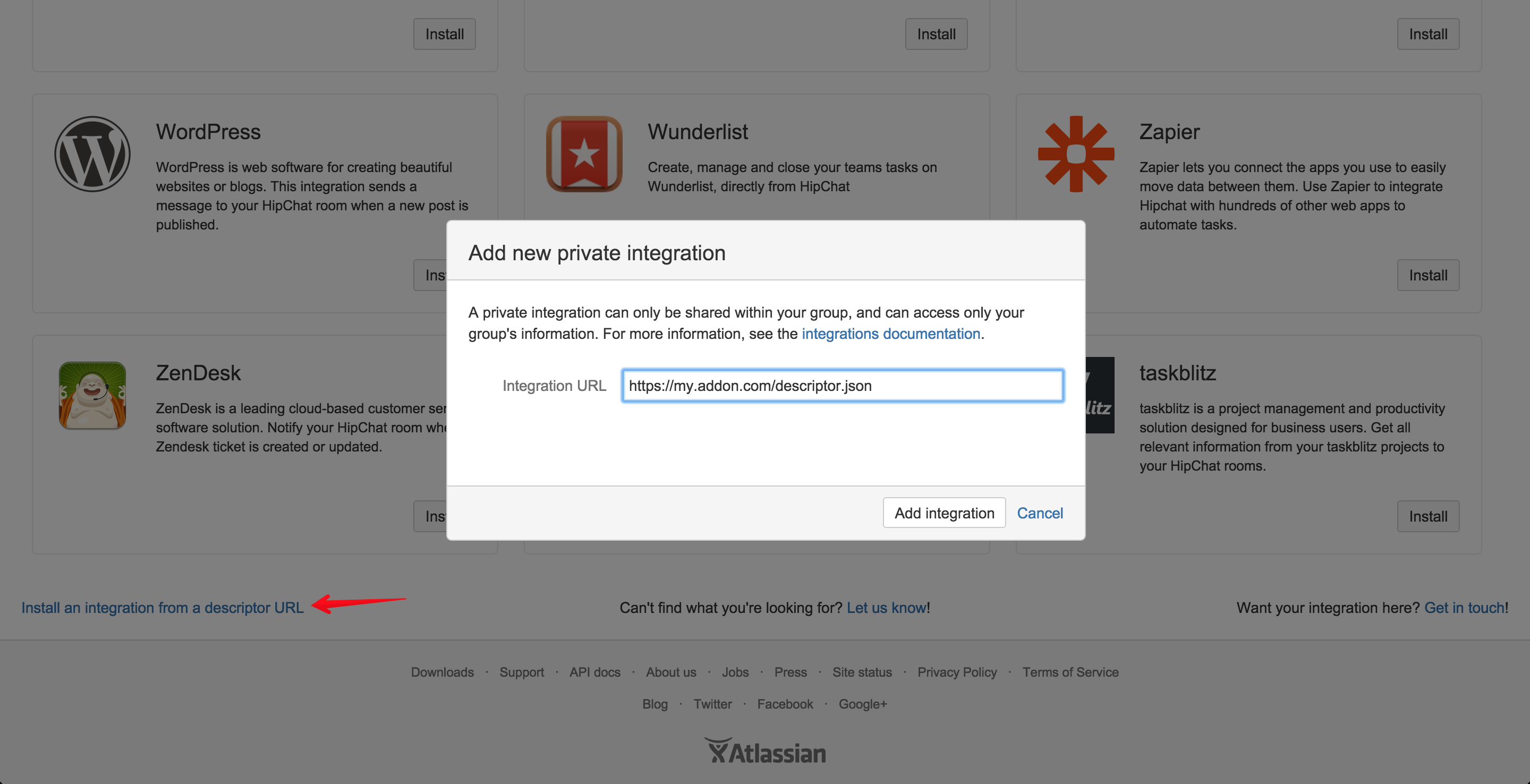Installation triggers
The installation of an add-on can be triggered by a user in HipChat, or in your application:
From HipChat
There are two ways users can trigger the installation of an add-on, from the HipChat administration screens:
-
From a Marketplace listing: if your add-on is listed on the Atlassian Marketplace, it automatically shows up in the HipChat administration screen for integrations. Users can discover it and trigger the installation from HipChat.

-
From a descriptor URL: you can install an add-on by entering its descriptor URL in the HipChat administration screen for integrations. This is what you typically do for ad-hoc add-ons, or to test your add-on during development before listing it in the Atlassian Marketplace

From your application
You can trigger the installation of a HipChat add-on from your application. For this you need to redirect the user to HipChat, passing information about the add-on you want to install.
Note that customers can either use HipChat Cloud, or HipChat Server - the on-premise version of HipChat. If you want your integration to work with HipChat Server, you need to ask users to specify the URL of their HipChat Server. If you do not plan to support HipChat Server, just use www.hipchat.com.
1 2"https://{url-to-hipchat}/addons/install?{install-params}
The following installation parameters are available:
-
Either url or key must be specified
-
url- The descriptor URL of the add-on (which can be a data URI) -
key- The Marketplace key of the integration
-
-
room- The room display name into which to install the integration. Omit for a globally installed integration. -
relayState- a string to send back to your add-on post installation
Scenario:
Install an add-on listed in the Atlassian Marketplace
Redirect:
1 2<a target="_blank" href="https://www.hipchat.com/addons/install?key=com.example.myintegration"> Install HipChat Integration </a>
Scenario:
Install an add-on from a descriptor URL
Redirect:
1 2<a target="_blank" href="https://www.hipchat.com/addons/install?url=https://your-addon-url/descriptor-url"> Install HipChat Integration </a>
Scenario:
Install an add-on from a descriptor passed as a data URI
Redirect:
1 2<a href="https://www.hipchat.com/addons/install?url=data:application/json;base64,<base64-encoded-descriptor>"> Install HipChat Integration </a>
Scenario:
Install an add-on listed in the Atlassian Marketplace, in HipChat Server
Redirect:
1 2<a target="_blank" href="https://<user-specified-hipchat-url>/addons/install?key=com.example.myintegration"> Install HipChat Integration </a>
Scenarion:
Install an add-on listed in the Atlassian Marketplace with the state "state"
Redirect:
1 2<a target="_blank" href="https://www.hipchat.com/addons/install?key=com.example.myintegration&relayState=state"> Install HipChat Integration </a>
Rate this page: